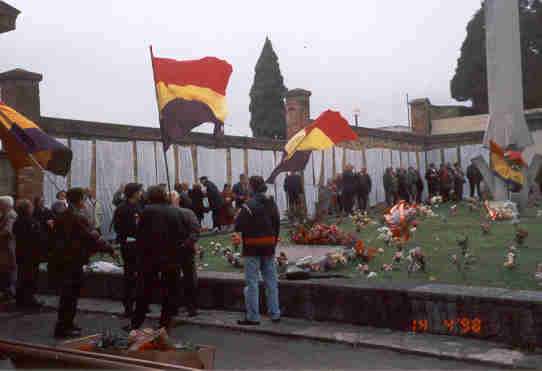 |
|
The most desired homage: the marble slabs and the frontispiece |
|
April 14th, 2001, Day of the Spanish Republic, was a happy day: the final moment of a very long process, as long as the very existence of the Grave: the process of dignity, the acknowledgement of the people buried in it; the process of the peaceful but clear and public report of the crimes therein committed. Many years, whole decades living and thinking underground, a great many moments of suffering in silence for fear of repression. There were many censored attempts of restoring the victims' names and surnames. Now a different history has begun, and we have a reason to celebrate. In 1986, the monument symbolizing the fight and the presence of those who fell was set in the middle of the Grave, as political obstacles prevented us from making something more significant. The marble slabs had been suggested then, and it was the beginning of the greatest step. In 1996 our Association was legalized and it was in 2001 when we achieved the final restoration of the identity and the dignity of our buried relatives and friends: As many as 42 marble slabs were installed on the walls surrounding the Grave, each one of them almost two metres high and more than one metre wide, silk-screened for them to be perfectly preserved. On the Inauguration
Day just the front slab was still not installed. It would include some
testimonial sentences and two Republican symbols: the arms and the flag.
This frontispiece would be eventually installed before All Souls' Day,
2001, thus finishing with a task aiming at the enhancement of this
Common Grave that gathers all of us around its borders. The slabs give us the name, surname, age and origin of all the identified victims, murdered for political reasons. Other data which can be read in the official files, concerning jobs and residence, could not be added as there wasn't enough space for all, but anyway we all feel they were not really necessary. What we have is enough and it makes us happy. It wasn't an easy process, though. We had to be very patient and get down to hard work: For instance, on the Day of the Republic in 1998 some members of our Association were as determined and enterprising as to buy bed sheets, cut them into strips and use permanent ink to write the names, dates and origins of all the victims. They did it by hand, carefully, hanging the strips of sheets on the walls. You can imagine our surprise when we arrived there on April 14! It was an important symbol, and a demand of justice To know more about the political and bureaucratic problems the Association had to face up to, click HERE. On the other hand, the Association called in on each and every Council the victims came from, in order to ask for economic help to have the slabs made. Some Councils gave more, some gave less, some of them wouldn't give the Association a single bank note, and some others wouldn't even open their doors for us. To see the whole list of municipal contributions, click HERE Leaving difficulties and sudden trips behind, we the young ones can only imagine the emotions those who suffered the hardest years may be feeling, now that moral victory has been achieved. There are members of the AFAFC, including myself, who can remember just the last years of dictator Franco and the difficult times that led us to democracy. Those who suffered in pain and in silence -widows, widowers, children of the victims- must be proud today, just as we, their descendants, are proud and happy. Only time heals all wounds and puts everyone in his place. |
|
At the beginning there were sheets: April 14th, 1998 |
 |
|
|
|
Pictures taken on the day the marble slabs were inaugurated |
|
|
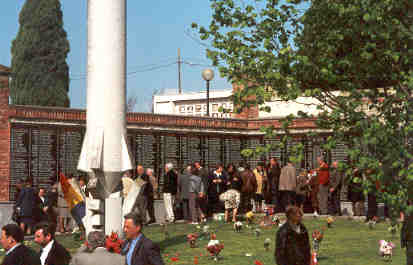 |
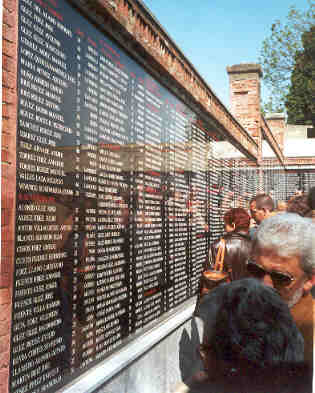 |
|
|
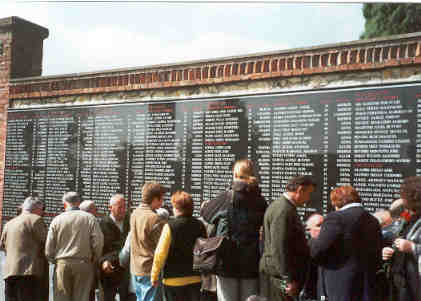 |
|
|
|
Text that can be read on the front of the Common Grave at Oviedo cemetery |
In memory of the victims of Franco's repression, buried in the municipal cemetery of Oviedo The Association of Relatives and Friends of the Common Grave would like to thank all local and regional institutions of all kinds, and the persons who have individually contributed to the funding of this project 1,330 people executed after a farcical court-martial 155 political prisoners who died in prison More than 280 executed without being court-martialed, of whom data of 19 are known, some of them incomplete |
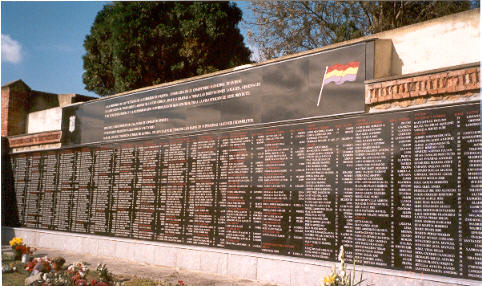 |
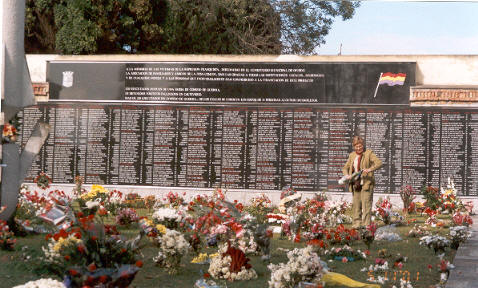 |
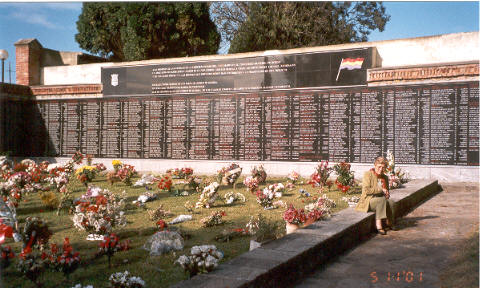 |
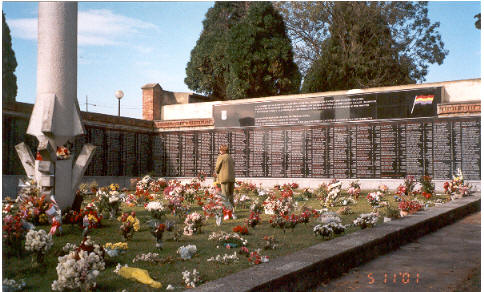 |